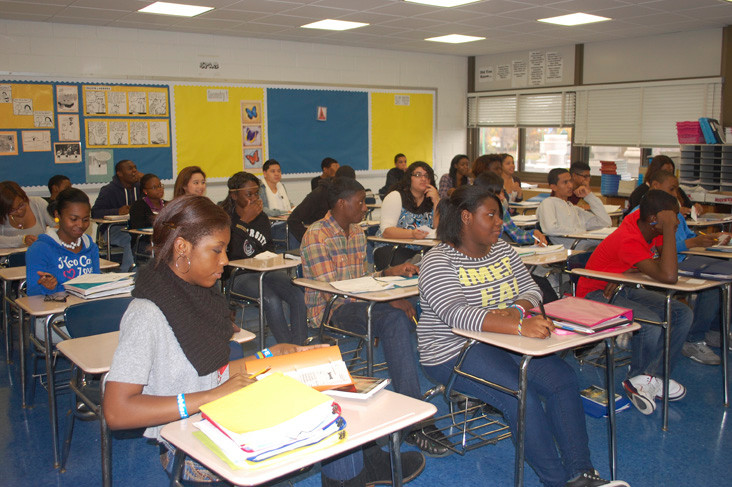School News
Closing the achievement gap in Valley Stream high schools
Posted
Part one of a three-part series
Non-white students are performing close to or above white students in the Valley Stream Central High School District, narrowing the gap between academic achievement in state monitored sub-groups, said Superintendent Dr. Bill Heidenreich.
“There are very few districts throughout the state that can say they don’t have an achievement gap,” Heidenreich said referring to the observed disparity between the academic performance of several racial groups. “It’s something we are extremely proud of.”
Diversity arrives
Historically, white students had outnumbered other racial groups, Heidenreich said. It was not until 20 to 25 years ago, that the district’s student body became more diverse. White students made up half the district’s student population a decade ago, a number that has gone down to 32 percent.
And in the last eight years, diversity has increased with each new class at the four district schools, Memorial Junior High and North, South and Central high schools, Heidenreich said. The population of black students climbed from 24 to 28 percent from 2007 to 2010, according to the latest New York State report card for the district.
There was a 7 point drop in the district’s white population, from 39 to 32 percent, in that same time period. The percentage of Hispanic students increased from 21 to 24 percent. What has remained fairly constant is the Asian population, which continues to represent around 16 percent of the student body in those years. Only 10 American Indian or Alaska native students and multiracial students, referring to those who fell out of the four main categories, are enrolled in the district.
And as the demographics changed, a gap among the different racial groups developed. Administrators use test scores to measure student performance, and to determine if a gap exists. Just a decade ago, 17 percent of white students scored at a level 4 — exceeding the standards — on the state English Language Arts assessment in grades 7 and 8, compared to 7 percent for black and 8 percent for Hispanic students, according to the 2001-02 state report card. Students scoring in levels 1 and 2 are considered in need of academic intervention, and level 3 means meeting the proficiency standard.
In math, just 5 percent of black and 10 percent of Hispanic students scored at level 4, compared to 19 percent for white students in grades 7-8 in the 2001-02 school year.
What the data shows now
Both Heidenreich and Dr. Thomas Troisi, assistant superintendent for curriculum and instruction, compared numbers, percentages and test scores on the district’s 2009-10 state report card. The data reflected an equity or closeness among academic performance of the district’s various racial groups on several student proficiency measures — English language arts, mathematics and a third indicator — which are all required by the Federal No Child Left Behind Act. The third measure was a science assessment at the elementary and middle school levels, or the graduation rate at the secondary level.
The report showed that white, black, Hispanic and Asian students had all made adequate yearly progress, meaning satisfactory movement toward the state’s proficiency goal, in the three areas, during the 2009-10 school year.
Grade 7, 8 test scores for groups
During the 2009-10 school year, there were 437 black and 369 Hispanic seventh- and eighth-grade students who were enrolled from October to the testing period. Each group averaged 177 on the performance index for ELA — a value from 0 to 200 indicating how a particular group performed on a required state test. That index is determined by a particular mathematical formula after categorizing student assessment scores into levels 1-4, of which 3 and 4 are considered passing.
Asian students earned a performance index of 193, and white students got a 186 on the ELA measure. The average performance index value for making adequate yearly progress, shown as the effective annual measurable objective, in each racial group ranged between 148-150.
In math, a group of about 475 white students got a performance index of 192, two points lower than their Asian counterparts. Both black and Hispanic students averaged a 188, with an average of 129 needed for making the proficiency standard.
In science, Hispanic students earned a 176 performance index, three points less than black students who got a 179. White students earned a 189 and Asian students earned a 193.
Next week: Students performance, graduation rates among different racial groups at the secondary level.
Report an inappropriate comment
Comments

 59.0°,
Partly Cloudy
59.0°,
Partly Cloudy 




